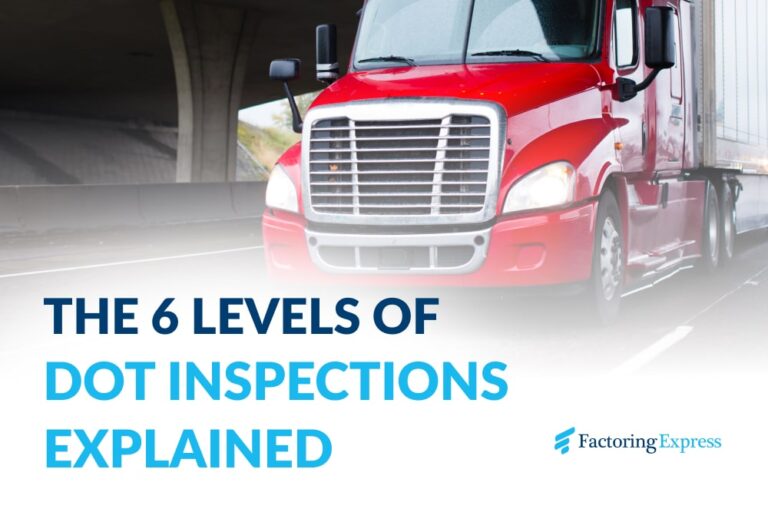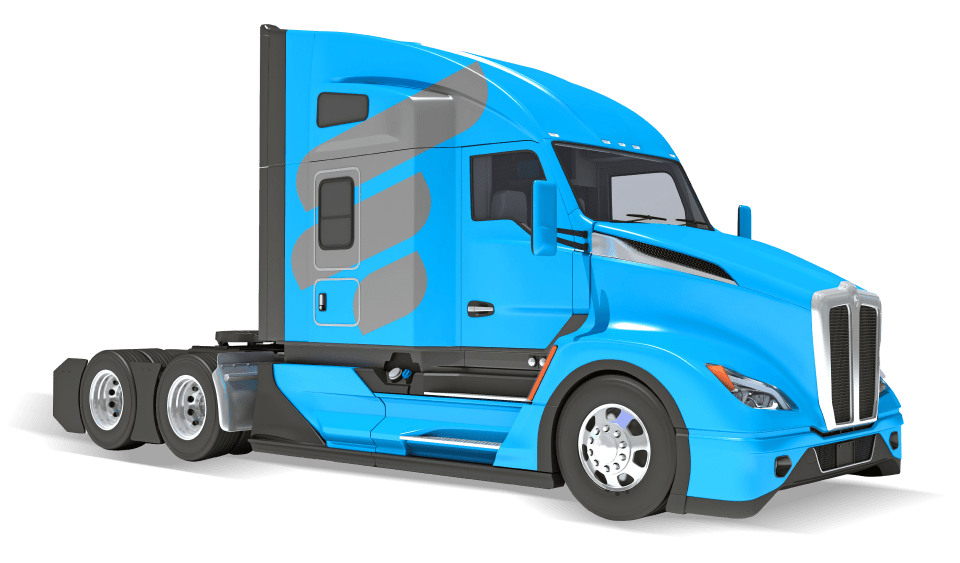Many truckers and drivers dread DOT inspections because they happen anywhere and anytime without warning. Many drivers fail the inspections due to the need for adequate preparation. Moreover, these inspections are separate from regular inspections that motor carriers conduct. It has six levels that commercial motor vehicles carrying over 10,001 pounds and drivers must pass.
What is a DOT Inspection?
The Department of Transportation inspection is a series of evaluations that check commercial motor vehicles to ensure they are in proper working condition. These checks are unexpected roadside tests by state enforcers or troopers working under the Federal Motor Carrier Safety Administration.
The inspections aim to ensure the safety of motorists and truckers on the road. The DOT seeks to ensure that commercial vehicles comply with regulations and rules to avoid accidents. A state police officer or regional DOT inspector can carry out the inspection.
Usually, the inspection comprises six levels lasting 15 to 60 minutes. Understanding what each inspection step entails ensures that the trucker knows what to expect.
The Six Levels of DOT Truck Inspections
State enforcers perform six inspection levels on a truck. However, remember that you may only know which step the enforcer will perform once they stop you. Therefore, familiarizing yourself with all inspection levels is vital.
Level 1: North American Standard Inspection
Level I of the DOT inspection checklist is the North American Standard Inspection. It’s the most common and comprehensive out of the six levels. This inspection entails thorough checks via a 37-step procedure involving the vehicle, the driver, and illegal cargo.
The enforcers expect the driver to show them the necessary documents, including the driver’s logs, commercial driver’s license, and skill and medical evaluation certificates. Also, the enforcers will evaluate the driver for drug use or alcohol consumption.
The inspector or enforcers will also thoroughly examine the following during this inspection:
- Suspension
- Electrical systems
- Braking systems
- Steering systems
- Tire assembly, including hub, wheel, and rim
- Windshield wipers
- All lights, including turn signals, headlights, and rear lights
- Exhaust and fuel system
- Seat belts
The inspector will check the operator’s medical certificate to confirm they passed the annual DOT physical exam. Also, they will assess the logbook record for the past eight on-duty days to ascertain the service record hours. If applicable, they will check the medical waiver or card. Typically, this inspection lasts 45 to 60 minutes.
Level 2: Walk-Around Vehicle and Driver Inspection
Level 2 of the inspections is the same as level 1. The only difference is that it excludes areas that require the inspector to check or go underneath the truck. That’s it is known as Walk-Around Driver and Vehicle Inspection.
Although it’s less exhaustive than Level 1, operators should prepare for it. The inspectors will ask for relevant documents and check them for drug or alcohol influence.
Level 3: Driver-Only Inspection
This DOT truck inspection level focuses on the driver’s credentials. The inspector checks the truck operator for the following:
- Driver’s license endorsements
- Skill performance evaluation certificate
- Medical card
- Record of Duty Status
- Hour of service logs
- Seat belt use
- Carrier status and identification
- Alcohol or drug use
Also, the inspector reviews the driver’s vehicle inspection reports with the driver’s signature. This inspection level lasts 15 minutes.
Level 4: Special Inspection
Level four of the DOT inspections comprise one-time evaluations focusing on specific items. Typically, these assessments verify or invalidate a claim or trend about the truck following previous reviews. This inspection level has no average duration since the inspectors check different items.
Level 5: Vehicle-Only Inspection
Level five inspections check everything that level 1 specifies. However, the driver is absent during the vehicle-only inspection. The inspector checks the vehicle’s steering mechanism, brake systems, electrical cables, fuel, tires, windshield wipers, engine, emergency exits, battery, cargo, lighting, trailer, and suspensions. This inspection can last 30 minutes.
Level 6: Enhanced NAS Inspection for Radioactive Shipments
Level six of the DOT inspections is a special assessment for the trucks carrying sensitive radioactive cargo. The Department of Transportation’s Title 49 Section 173.403 sets forth the select radiological shipments comprising highway-route-controlled quantities.
The DOT inspector requires the drivers, vehicles, and cargo to pass this inspection level before departure. The enforcers attach a unique nuclear symbol to the commercial motor vehicles that complete this step to indicate they have passed level six inspection. The attached nuclear logo is valid for a single trip, and its removal must be when the truck arrives at its destination. This inspection takes around 60 minutes.
Why Are DOT Inspections Necessary?
The Department of Transportation can inspect a truck at any time. The inspections are vital for the safety of commercial drivers and other road users. Here are some of the benefits of DOT inspections.
Safety
The DOT’s primary reason for truck inspections is to remove unsafe vehicles from the road. Dangerous trucks endanger every road user. The Department of Transportation conducts the checks to ensure unsafe heavy-duty trucks that may cause disastrous consequences do not ply the U.S. roads.
Saving Money
Another benefit of these inspections is enabling truck operators to save money. Partly, they save money by avoiding fines. However, the reviews help them ensure their vehicles are running properly to avoid expensive repairs in the long run.
These inspections help heavy truck operators identify issues before they become unmanageable problems. If you depend on a heavy-duty truck to earn money, knowing the safety concerns the inspector identifies during the DOT inspection is vital.
When transporting hazardous cargo, a problem with the braking system could lead to severe financial penalties and fines. Preparing for these inspections helps business owners keep their trucks and drivers in proper condition to ensure they pass.
Staying Legal
The Department of Transportation conducts inspections to ensure heavy-duty trucks remain legal and safe for road use. The DOT implements strict rules and guidelines regarding the vehicles’ weight, size, and running status. DOT enforcers can heavily fine or take your truck off the road if it doesn’t comply with these rules. Therefore, drivers must familiarize themselves with the requirements for the DOT annual inspection to measure up in the DOT’s eyes.
For instance, businesses and heavy-duty vehicle operators must ensure their trucks are within the standard trailer length of 65 feet or less. When transporting hazardous cargo, this length should be 80 feet or less.
Controlling Chemicals and Odors
The DOT must register any vehicle to transport hazardous materials to ensure it meets safety regulations. One critical role of DOT Inspections is ensuring that vehicles comply with safety regulations without posing risks to other road users. Oversized vehicles and semi-trucks use gasoline, natural gas, and diesel fuel emitting fumes. Therefore, the DOT inspects commercial motor vehicles to ensure operators manage these emissions correctly without endangering humans and the environment.
How to Minimize Your DOT Violations
Discipline, coordination, and consistency with drivers are crucial for passing every DOT inspection level. Here are tips to prepare your drivers for the inspections.
- Organization: Encourage your operators to organize their files while on the road. The DOT inspection checklist includes numerous documents, from certificates to licenses. Therefore, the organization prepares the drivers for this inspection. For instance, they can place the necessary documents in one folder but have backup copies to be safe if they lose the originals.
- Keep trucks clean: Cleanliness is not a criterion for the inspections. However, it signals the DOT inspector that you’re keen on the details of your vehicle.
- Check out-of-service violations: Out-of-service violations can prompt the inspector to disqualify or fine you if you fail to address them appropriately. Often, they involve mission-critical systems, such as the fuel, frame, and brake systems.
- Be professional: Train your truck operators to be experienced and courteous to inspectors. An authentic or friendly remark could be all you need to get favorable results.
How to Pass DOT Inspections
The best way to pass the DOT inspections is to prepare adequately. But only some business owners have the time and resources to manage a fleet so that it passes these inspections. That’s where Factoring Express comes in.
We’re a Miami-based factoring company providing services to independent transport companies. We make operations for transportation companies easier. Our crew will listen to your unique needs and help your business achieve its goals. We provide custom solutions and a personalized approach since we know the challenges of running a trucking company.
Trust us to help you pass every DOT inspection level once you enlist our service. Please call us to get started today!




